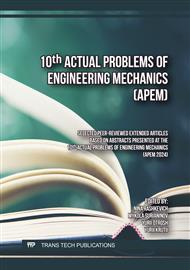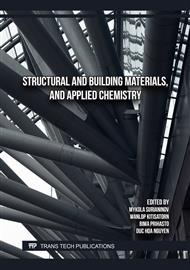p.3
p.13
p.19
p.31
p.39
p.47
p.57
p.63
p.75
Comprehensive Studies of the Mechanical Properties of Fiber Concrete
Abstract:
The results of research on the mechanical properties of concrete with the addition of steel fibers of three different types - anchored, flattened and waved - are presented. To study the influence of steel fiber on the mechanical characteristics of fiber concrete, standardized samples were made and the following tests were carried out: cubes for chipping and compression; compression prism; figure eights for stretching; prism for tension in bending. Different types of steel fiber show unequal increases in strength. The most profitable from this point of view is the addition of anchor fiber to concrete, the least - wave fiber. But the presence of any of the considered steel fibers in the composition of the mixture significantly increases the strength of the sample. The obtained values of tensile strength when splitting the cubes, depending on the type of fiber, differ from the control concrete samples, respectively: for the anchor fiber by 22.82%, for the flattened fiber – 21.84%, for the wave fiber – 9.59%. The presence of fiber reinforcement has a positive effect on the strength during compression tests of cubes: by 13.01% for anchor fiber, 13.84% for flattened fiber, and 11.47% for wave fiber. It was found that the load-bearing capacity of steel-reinforced concrete under compression practically does not depend on the type of fiber, but the very presence of steel fiber in the concrete mixture from which the prisms were made increases the strength of the sample by an average of 11% compared to concrete prisms. In eight-figure tensile tests, the strength of concrete reinforced with wave fiber fiber gave an increase of 4.1% and 4.4% for reinforcement with anchor fiber. Tensile testing of prisms during bending using steel fiber on average increases the load at the beginning of cracking by 40%, and the load-bearing capacity by 64%. In addition, the type of failure of the sample changes from brittle to viscous.
Info:
Periodical:
Pages:
39-46
Citation:
Online since:
December 2024
Authors:
Keywords:
Price:
Сopyright:
© 2024 Trans Tech Publications Ltd. All Rights Reserved
Share:
Citation:



